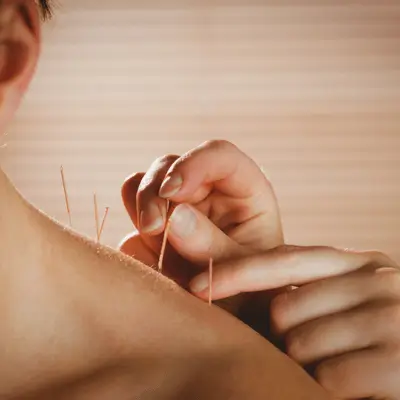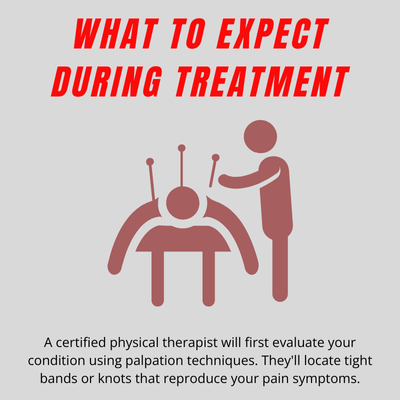Dry needling has become a popular treatment technique in sports medicine and physical therapy clinics across the country. This modern approach targets trigger points in your muscle and fascia to reduce pain and restore normal function, helping with pain management, muscle tightness, and even issues like tendinopathy or inflammation. Therapists often rely on palpation to find the right spots before inserting the needles, which improves the effectiveness of the treatment.
Unlike acupuncture, which follows traditional Chinese medicine principles, dry needling is based on Western anatomy and physiology. While both dry needling and acupuncture use thin needles, physical therapists focus on muscles and trigger points instead of energy pathways.
This evidence-based practice is often compared with acupuncture, but its role in treating myofascial pain syndrome and various musculoskeletal conditions makes it a trusted option in modern rehabilitation.
Understanding Dry Needling vs Acupuncture

The key difference between dry needling and acupuncture lies in their approach and treatment objectives. Acupuncture focuses on balancing energy flow along meridians throughout the body. It can address many health conditions beyond muscle pain, including inflammation and overall pain relief.
Dry needling targets specific trigger points in muscle tissue. Therapists insert thin needles into tight knots in your fascia and connective tissue. This treatment technique aims to release muscle tension and improve movement patterns, which helps people with myofascial pain syndrome or tendinopathy.
Both methods use similar thin needles. However, acupuncture requires specialized training in traditional Chinese medicine. Dry needling is performed by licensed physical therapists who complete additional certification programs, often focusing on the effectiveness of treating muscle injuries, tendinopathy, and reducing inflammation.
The effectiveness of each approach differs based on your condition. For myofascial pain syndrome and other muscle-related issues, dry needling shows strong results in clinical studies and can provide lasting pain relief.
How Dry Needling Provides Pain Relief
When muscles become overused or injured, they develop trigger points. These are small areas where muscle fibers get stuck in a contracted state. The problem often starts with excessive chemical release at motor end plates, where nerves connect to muscle.
These tight spots create a cycle of problems. Blood flow decreases in the area. The tissue becomes more acidic due to poor oxygen supply. This acidic environment irritates local nerve fibers, causing inflammation and pain.
The needle insertion creates a controlled injury that triggers your body’s healing response. Blood flow increases to the area. Fresh oxygen arrives while acidic waste products get flushed out. This process helps release the tight band of muscle and restore normal length.
Many patients experience twitch responses during treatment. This brief muscle contraction shows the trigger point has been activated. After proper stimulation, pain-causing chemicals like substance P decrease in that spot.
Dry needling also works through your nervous system. The needle stimulates sensory pathways that release natural painkillers called neurotransmitters. These include endorphins that provide analgesia during and after treatment.
This treatment technique helps reset dysfunctional areas in your muscle. It interrupts pain patterns and allows proper healing to begin.
Benefits for Athletes and Active Individuals

Dry needling offers several advantages for pain management and rehabilitation. The most immediate benefit is trigger point release. Patients often feel their muscle “loosen up” right after a session.
This relaxation leads to improved range of motion. A stiff neck might turn further. Tight hamstrings might allow deeper stretching. The treatment helps restore normal muscle function by reducing pain signals that were limiting movement.
Research shows trigger point therapy can improve muscle strength. When pain decreases, previously inhibited muscles can contract and fire more normally. This makes dry needling valuable in rehabilitation settings.
For tendinopathy conditions like tennis elbow or Achilles problems, the needle technique creates controlled micro-trauma in damaged tendons. This stimulates a healing response. Your body sends growth factors to repair collagen in the affected tendon.
Studies show the effectiveness of dry needling for tendon pain lasts up to six months after treatment. This makes it a valuable tool for athletes dealing with overuse injuries.
The treatment works best when combined with other interventions. Physical therapy exercises, stretching, and manual therapy address the root causes of trigger points. This comprehensive treatment plan prevents problems from returning.
Conditions That Respond to Dry Needling
Myofascial pain syndrome responds particularly well to this approach. Chronic muscle pain with trigger points in your neck, shoulders, or back often improves with regular sessions.
Sports medicine clinics frequently use dry needling for various conditions:
Athletes with muscle strains and overuse injuries benefit from trigger point identification and treatment. Runners with IT band syndrome or cyclists with tight hip muscles often find relief.
Multiple types of tendinopathy respond to needling interventions. Tennis elbow, golfer’s elbow, rotator cuff problems, and patellar tendinopathy all show positive results in clinical studies.
Headaches caused by neck muscle trigger points often decrease in frequency and intensity. The fascia and connective tissue in your upper shoulders can refer pain to your head.
Lower back pain and sciatica may improve when tight lumbar and gluteal muscles are treated. Muscle spasms in these areas often contribute to nerve irritation.
Even plantar fasciitis patients benefit from dry needling in their calf muscles. This shows how interconnected your fascia and muscle systems truly are.
What to Expect During Treatment

A certified physical therapist will first evaluate your condition using palpation techniques. They’ll locate tight bands or knots that reproduce your pain symptoms.
The needles used are extremely thin. Most people feel only a mild pinprick during insertion. The skin is cleaned before each needle is quickly inserted into the trigger point.
Needle insertion depth varies based on the target tissue. Sometimes the needle stays shallow in connective tissue. Other times it goes deeper into the muscle belly to reach specific trigger points.
You might experience a brief twitch or cramp as the muscle responds. This local twitch response indicates the treatment is working effectively. Most patients describe it as a quick muscle spasm followed by immediate release.
The therapist may move the needle gently to provoke more release. Sometimes needles stay in place for several minutes while your muscle relaxes. The number of needles used depends on how many areas need treatment.
After removing the needles, gentle stretching or massage may follow. This helps enhance the benefits of the treatment protocol.
Safety and Potential Side Effects
When performed by trained professionals, dry needling maintains excellent safety precautions. The most common side effects are mild muscle soreness and occasional small bruises at needle sites.
Some patients feel slightly tired after treatment. This likely results from your nervous system releasing built-up muscle tension. These effects are temporary and not harmful.
Serious complications are extremely rare. Proper training in anatomy helps therapists avoid important structures. Many states require specific certification for practitioners to ensure safety.
You should inform your therapist about medical conditions, pregnancy, or blood-thinning medications. These factors might affect your treatment approach but rarely prevent treatment entirely.
Most patients tolerate the procedure very well. The pain relief often outweighs any mild discomfort from the needles.
Research Supporting Effectiveness

Multiple studies demonstrate the effectiveness of dry needling for various conditions. A 2023 review found that patients achieved faster recovery when combining dry needling with other physical therapy treatments, and some studies even compare its results with acupuncture for certain types of pain.
Research consistently shows benefits for myofascial pain syndrome, chronic pain, and tendinopathy conditions. The treatment reduces inflammation while improving muscle function and range of motion, much like acupuncture is used in other settings for pain relief.
Sports medicine research supports using dry needling as part of comprehensive rehabilitation programs. The combination of trigger point therapy with exercise produces better outcomes than either treatment alone, which mirrors how acupuncture is often combined with lifestyle or rehab care.
Evidence-based practice guidelines now include dry needling recommendations for specific muscle and fascia conditions. This recognition reflects growing research support and clinical effectiveness, while acupuncture continues to be studied alongside modern approaches.
Taking the Next Step
If persistent muscle pain or tightness limits your activities, dry needling might help. This intramuscular stimulation technique addresses the root cause of many musculoskeletal problems.
The key is finding a qualified provider who understands proper biomechanics and treatment protocols. Look for physical therapists with specialized dry needling certification.
Don’t let trigger points control your life. Schedule a consultation with a certified dry needling specialist today. They can evaluate your condition and determine if this powerful treatment technique fits your rehabilitation goals.
Your path to pain-free movement starts with taking action. Contact a qualified physical therapy clinic in your area to learn more about how dry needling can help you return to the activities you love.

